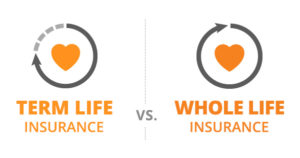Last Updated on April 15, 2025
 Many people take out a life insurance policy, and at times, may wonder if they even need the coverage. Or maybe, they feel they can find a policy, that is less expensive.
Many people take out a life insurance policy, and at times, may wonder if they even need the coverage. Or maybe, they feel they can find a policy, that is less expensive.
If an agent offers you a cheaper life insurance policy compared to your current one, the one common mistake is to take it at face value. With life insurance policies, the devil is always in the details. Most life insurance agents are not properly trained, in working with the diabetes community. They provide fake, ‘low ball’ quotes, and then when you apply, the ‘real’ rates are much higher.
You never want to replace, or alter an existing life insurance policy, until after you apply, and know what the true costs, of the new policy would be. There are multiple ways why people change their life insurance policies. Here are a few:
1. You life insurance policy has already expired, or about to expire – With term life insurance, the initial policy is only in force for a certain term duration. You may need to replace one policy, with another that will be enforce for a longer term duration
2. Their financial priorities have changed – Over time, you may no longer have a need for a specific type of policy. If you have a whole life insurance policy, that may no longer be the right policy for you. Replacing it with a term life insurance policy, may be in your best interest.
3. The present policy coverage is insufficient – As your life changes, so does your need for life insurance. When you are younger, perhaps you took out a smaller policy. But as you get married, have children, you’ll probably have a great need for coverage. Replacing a smaller policy, for a larger one, is a pretty common occurrence. If not knowing how much life insurance you need, simply contact us! We’d love to help!
4. The life insurance company had a rating downgrade – Over time, your once financially stable life insurance company, may run into some ‘turbulence’. If you aren’t happy with their financial situation, or decision making skills, it may be a good idea to explore options to replace your policy.
5. Money is tight, and they are looking for a cheaper life insurance policy – As your finances change over time, a policy that you could once afford, may no longer fit your budget. If this is the case, it would be a wise decision to look into your options.
6. You are no longer happy with their current insurer – In the future, you may find out your initial life insurance company, got bought out by another company. Nothing will change with your policy, but perhaps the new company your coverage is thru, isn’t one that you’re a fan of. If this is the case, looking for a new company could be in your best interest.
7. Your health has improved, from when you first started the policy – If your control of your type 1 diabetes or type 2 diabetes has improved, it’s probably a good idea to explore your options. Especially if your A1C level has improved. You may be able to qualify for a new life insurance policy, where the premiums are 10% to 25% lower. Also, over time, more companies are offering lower life insurance rates for diabetics. As your health improves, there’s a chance your life insurance rates will too!
 Now, if your current policy has expired, the decision is made for you. It’s now important to sit down and outline your priorities, and try to determine what route to take. If you can’t convert or extend the existing policy, you’ll need to reapply with the current company, or another life insurance carrier.
Now, if your current policy has expired, the decision is made for you. It’s now important to sit down and outline your priorities, and try to determine what route to take. If you can’t convert or extend the existing policy, you’ll need to reapply with the current company, or another life insurance carrier.
Regardless of where you are in your life right now, taking the risk of being uninsured is a dangerous proposition. The risks multiply when you are the main breadwinner of the family.
If you can’t decide right away, you can enroll in a simplified issue life insurance, which precludes a medical exam. No medical exam life insurance for diabetics is available to most of the diabetes community. These policies don’t require medical records, or a medical exam. You also get an approval in a matter of days.
However, the death benefit is usually capped around $500,000. So if you need more coverage than this, then you’ll perhaps want to only have this policy for an interim basis. You can always replace this policy, for a cheaper one at a later date.
Another thing to consider is the final expense policy just to get yourself covered. The final expense policy will pay for the cost of hospitalization, funeral or burial costs. The bad news is that there won’t be enough left for your family after all those expenses are deducted. These policies are designed to cover $10,000 up to $50,000.
If you are in a pink of health, it’s suggested that you don’t delay picking up a new insurance policy so you will pass the new round of medical tests and get the maximum benefits of the new coverage.
 Re-evaluating your Life Insurance Portfolio
Re-evaluating your Life Insurance Portfolio
Life changes. We understand that. And from time to time, you should review your current life insurance situation.
If you could no longer afford the monthly or quarterly payments, then perhaps you need to downgrade your insurance or shift to another type of policy.
For instance, if you have whole life insurance but are struggling to make payments, perhaps it’s more cost-efficient to shift to term life insurance, which will slash your premiums significantly. It’s important that you talk to your insurance agents on the pros and cons of both policies. Any cash value in the policy, would be paid to you, if surrendering the whole life insurance policy.
If you have a term life insurance:
1. Death benefits will payout if death occurs in the initial term duration .
2. The policy is very affordable, and less expensive compared to permanent life insurance.
3. You can choose the terms from 10, 20, 30 years and so on. The policy can be structured to meet your financial objectives.
4. At end of the initial term duration, the policy becomes annually renewable.However, these premiums are extremely expensive, and cost prohibited.
If you have whole life insurance:
1. The coverage will cover your entire life. Premiums do NOT increase.
2. Significantly more expensive compared to term life insurance.
3. Policy accumulates cash value over time. You can withdraw a portion of the cash at a certain period depending on your policy. Or if you surrender the policy, the cash value will be paid in a lump sum payment.
The whole life insurance policy may end up being more beneficial for your family in the long run because the insurer will invest some of the money and you get earnings in return.
When is Whole Life Insurance Beneficial?
Because of the costs involved, whole life insurance is not for everybody. But there are times when it’s going to be advantageous to the policy owner.
For instance, an affluent person with a large estate should definitely take up a permanent life insurance. The IRS has placed a cap of $5.43 million on estate taxes. Anything worth more than that will be covered by the permanent insurance.
If you are the main breadwinner and your children or spouse or on permanent disability, for example, there’s no other choice but to get permanent life insurance to get them the coverage they need. Another instance is when you own a business. The industry generally looks at whole life insurance as an asset that can be used for a smoother succession plan or exit strategy in case the insured person dies unexpectedly.
It should be noted, however, that if you can afford it, whole life insurance may be worth the investment. In addition to providing a permanent form of life insurance, the policy would accrue cash value. Permanent insurance isn’t ideal for everyone, but for many it’s a wise product to seek out.

When is Term Life Insurance Ideal?
Term Life insurance is generally recommended to people who ONLY need life insurance for a specific period of time.
Maybe you only need life insurance to protect your income, thru your working years. Or maybe you just need a policy to protect a mortgage, for 30 years.
Another reason to go with term life insurance is due to it being the most affordable type of policy. If you cannot afford a permanent form of life insurance, term life insurance would be your best bet! For many younger people, a term life insurance policy would be ideal. Most people with Type 1 or Type 2 diabetes will be paying slightly higher rates due to living with a chronic illness. Thus, term insurance may be the best way to begin your life insurance portfolio. Now, the good news is a person can always reapply for a form of permanent insurance, or convert their existing term life insurance policy. As your life changes, it’s important that your life insurance changes with you.
Some Factors to Consider When Replacing Policies
Before you do decide to change your life insurance, you also have to consider the following variables:
You may have to take a blood/urine test again – Your life insurance has your current medical records. However, when you shift policies, you will be subjected to a battery of laboratory and diagnostics tests again. Unfavorable results may add some restrictions to your new life insurance policies, you may pay a higher premium, or you may be ineligible to get that policy you’ve been wanting. If wanting to increase coverage, you’ll have to complete a paramedical exam again.
You may waive your contestable period – If you replace your life insurance, you will once again be subjected to the two-year standard contestable period. What this says is that for the first two years of death, the insurer may contest the benefits.
Upgrading to a new policy with your old insurer may be cost-efficient – Ask from your insurer of any policy that will address your needs. You may save money in the long run if you just upgrade your policy to a new one. Many term life insurance policies provide convertibility features, that do not require ANY underwriting!
Here’s a short checklist before deciding to replace your life insurance:
- What are the costs if you shift to a new policy?
- Any tax consequences if I surrender a cash value based policy?
- Are there stark differences between your old life insurance policy with the new one?
- Will the premium be higher on account of age, chronic diseases, and other factors?
Reducing the Life Insurance Benefit

You don’t even have to change your life insurance policy right away. You can talk to your current insurer on how to cut down your premium.
One way to do this is to cut down the term length or paring down the amount of your death benefit. Talk to your insurance agent if they allow decreasing the face value of your policy. Generally, insurance companies agree to this at least once during the duration of your term.
Also, if you’ve been taking care of your health by stopping drinking or smoking, and the last medical checkup you’ve had gave you a pink bill of health, you can ask your insurance company to reconsider your health classification. As you know, prior diseases will result in a higher insurance premium. In contrast, healthy or “preferred” individuals typically pay lower premiums on their life insurance.
When Priorities Change
Your circumstances will change as you go through life. In general terms, you need life insurance when you have financial obligations that will be passed on to your spouse or children when you pass away. Among the examples are your housing mortgage, your car loan, and your children’s tuition. Of course, if you are currently unemployed at the moment, getting life insurance would be way below your list of priorities. For certain individuals, they may not need any life insurance at all. If you no longer need a policy, you would be able to cancel the policy without any penalty. Please don’t pay for any type of insurance product if no longer needing the protection.
 However, it’s time to revisit your life insurance policy if you’ve paid off your housing mortgage and your car, your children already graduated and have jobs of their own, and you are already debt-free. If you are already retired, maybe it’s time to rethink your life insurance policy altogether. A burial insurance policy would be significantly cheaper and would be the best option for you, just to unburden your children of the costs of your final rites.
However, it’s time to revisit your life insurance policy if you’ve paid off your housing mortgage and your car, your children already graduated and have jobs of their own, and you are already debt-free. If you are already retired, maybe it’s time to rethink your life insurance policy altogether. A burial insurance policy would be significantly cheaper and would be the best option for you, just to unburden your children of the costs of your final rites.
Don’t feel like you have to make these decisions alone! We are here to help, and to help you make an informed financial decision. Just contact us, and let a friendly agent review all of your diabetes life insurance options. We specialize in helping the Diabetes community find the best types of life insurance policies on the market. Let us earn your business today!
Patrick Bailey is a blogger and professional writer focused on mental illness and addiction. Curious as to what else Patrick has wrote? Take a look at some more of his articles and posts on mental illness and addiction.

